Anglers Booking Team
The expert copywriters at Anglers Booking have meticulously crafted this article. Our dedicated team of writers provides valuable insights and information to enhance your angling experience.
 12 minutes read
12 minutes readTrout fishing, with its many species and the thrill of freshwater angling and fly fishing techniques, is an exhilarating experience that never fails to excite anglers.
This species is primarily known for its cunning, speed, and fighting ability. Although not overly heavy, it requires a special strategy and the right choice of bait because deep in the water, the entire fishing process is once reduced to bait and its presentation.

The choice is generous, ranging from natural baits like worms and insects to artificial lures like spinners and soft plastic jigs. The question is, how do you know which bait to use and when?
For this reason, we have prepared this guide. In it, we'll explore the best lures for Trout fishing and provide tips on how to use them correctly in different fishing conditions and techniques. Therefore, prepare the rods, tighten the lines, and let's go on a Trout fishing adventure together!
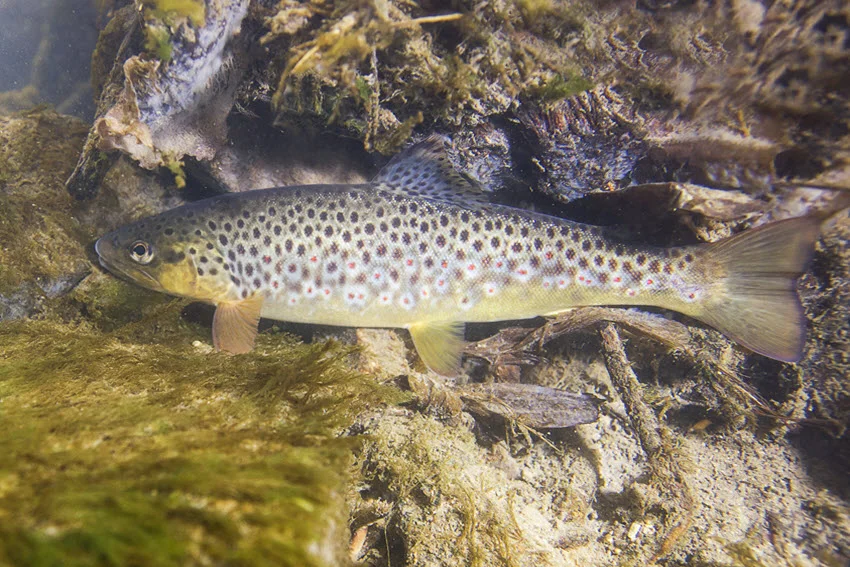
Trout enchant many anglers because they have that something, and their meat is first-class. Elegant, fast, and cunning, whether a Brook, California, or Lake Trout, they are characterized by similar behavior, and their cunning should be learned.
They are adaptable, and their menu is diverse, including small insects and larvae, crustaceans, and smaller fish. However, Trout do not bite easily and are very cautious, which means they can outwit you if you are not patient and precise enough, and even hijack the bait.
Trout, with their fascinating adaptability to different habitats and seasons, are a species that never ceases to intrigue anglers.
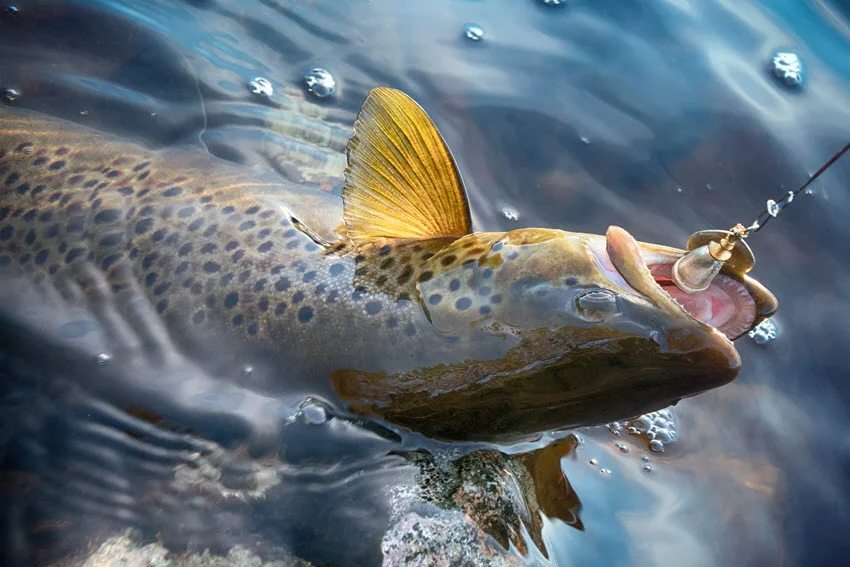
Lakes and ponds are still waters, but their surface is diverse. Habitats range from shallow, weedy areas where young Trout feed to deeper, cooler zones preferred by larger specimens. Trout in lakes and ponds often feed near the surface during the cooler part of the day, chasing insects, small baits, and crabs. During the warmer months, they retreat into thermoclines or cooler areas.
This period is excellent for exploring different methods, from trolling with spoons and spinners to throwing live bait. The best time to fish is early morning and evening when the Trout becomes more active due to lower temperatures and light levels.
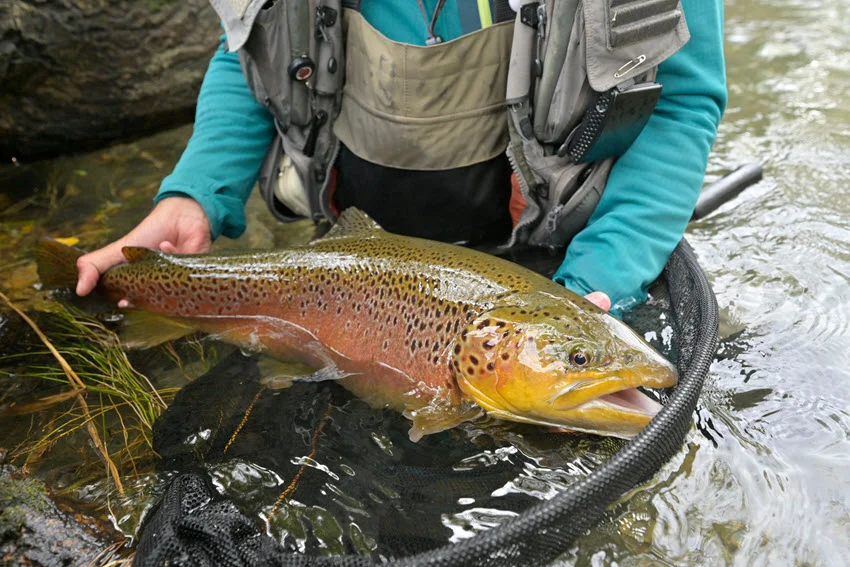
Rivers and streams, the natural habitat of Trout, are a sight to behold with their dynamic and fast waters, attracting these elegant fish with their low temperatures, high oxygen levels, and abundant food.
Gullies, runs, and pools are the main hiding places for Trout, which use various rock structures, logs, and other structures as cover while catching prey such as aquatic insects and small fish.
Anglers here often opt for fly fishing because it imitates the insect movements that Trout actively hunt. But drifting live bait or using small bait is also not bad. The cunning of these fish is that they often set up in slower currents to conserve energy while waiting for food to pass.
Trout are not always active at the same intensity, so the ideal time to fish them often depends on the season, water temperature, and time of day. They are most active in spring and fall, when the water temperatures are generally moderate, especially in the morning and late afternoon, when the sun is not too intense.
Pay attention to the weather. Cloudy days or light showers can make fishing extremely productive. The Trout becomes less cautious and more active, and you can make the most of your time on the water.

Trout behavior changes and adapts to the seasons and different daily weather changes. So you need to have a set of different baits at your disposal because no matter how hard you try, you can't always predict the weather and the opportunities that may befall you. In the following section, find the basis of Trout behavior according to seasons.
For Trout, spring is the period of awakening, when natural insects such as flies and larvae appear intensively. Therefore, Trout is primarily focused on surface food. If the winter was strong and snowy, the high water levels due to the melting of the snow brought an abundance of oxygen, further encouraging their activity.
This is also when Trout often migrate to shallower parts of rivers and lakes, where food is easier to find. At the same time, spring is an ideal time for anglers because Trout are hungry and less cautious, so natural baits or artificial flies can easily attract them.
Summers can be challenging for Trout as rising water temperatures reduce oxygen levels. Because of this, Trout retreat to cooler, deeper waters or seek shelter in shady areas under rocks and banks.
During the hottest part of the day, they are almost inactive, but early in the morning and late in the evening, they remain active, feeding on insects and smaller fish. During the summer, deep baits and techniques such as using nymphs or trolling are especially effective.
Fall is an exciting and important period for Trout fishing. As they prepare for winter, Trout eat intensively to increase their energy reserves. As water temperatures drop, they are more active during the day. Fall is also the spawning season for most Trout, especially in the fast-moving parts of rivers and streams.
Trout often attack larger baits, making them easier targets for anglers. The autumn colors of nature are a special attraction, making this period particularly attractive for those fond of fly fishing and classic techniques.
Like most fish, Trout's metabolism slowed down due to cold temperatures, which reduced activity. They choose their food carefully and selectively and generally stick to more profound, quieter parts of the water where the temperature is more stable.
At this time, Trout are less likely to move quickly and attack the bait. Therefore, it's best to stick to live baits like worms and grubs and slower approaches, which can be most effective.
When it comes to Trout fishing, it's hard to resist the charm of live lures. Trout are freshwater predators with a keen sense of smell and taste, meaning they can tell what's real and what's artificial.
Worms, minnow smells or insect crunches, and live baits mimic what Trout would eat in the wild, giving anglers an advantage. You can fish in a still pond, a fast-flowing stream, or a cool lake, where understanding the best live baits can make all the difference.

The first and basic and often classic choice for Trout anglers, not out of boredom but with good reason. The worm has a sinuous movement and an earthy smell that is simply irresistible to Trout, whether you are fishing in lakes, rivers, or streams. You can also use night crawlers, garden worms, or reddish creepers.
To make sense, hang the worm on the hook so that it can still twist, creating a natural movement in the water. Present the worms downstream, hang them under a bobber, and watch as the curious Trout can't resist biting. Our pro tip is that worms naturally wash into the water after rain, making them even more tempting to Trout.
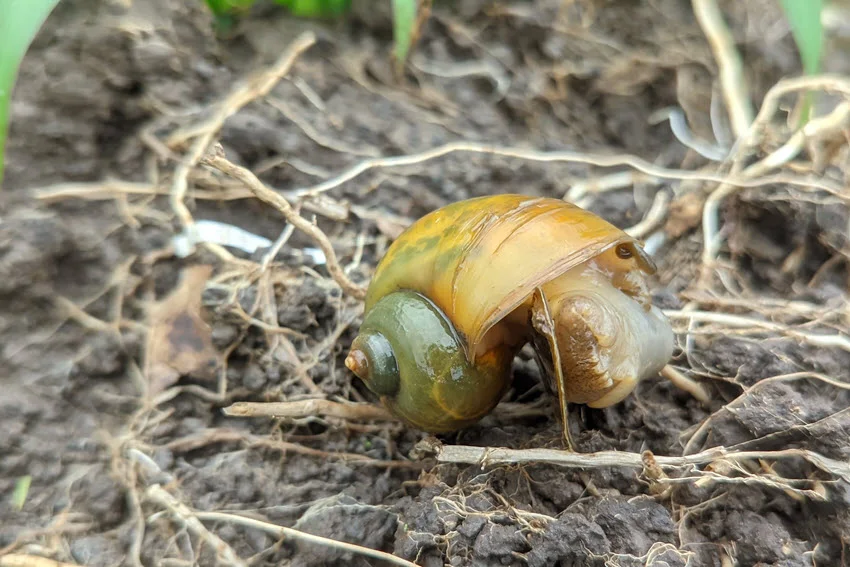
Molluscs and crustaceans are full of protein and are authentic delicacies for Trout, especially in the rocky beds of streams and rivers. Accordingly, make your bait soft mollusks to release a strong scent.
Bouncing on the bottom mimics their natural movement, drawing predatory Trout out of hiding. This is especially effective during the summer months when crayfish are plentiful.
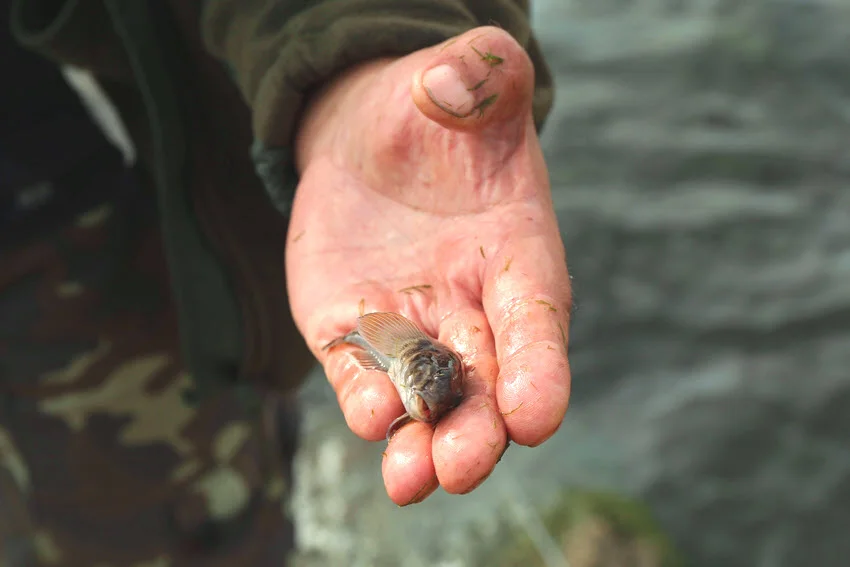
Small fish, such as minnows or shiners, are the mainstay of a Trout's diet and are particularly effective for targeting larger Trout. A good option is to use live or dead minnows, hooking them through the back or lips to keep them alive in the water. You can log them naturally in rivers or troll them in lakes for the best results. Glistening scales and erratic movements are irresistible to Trout.
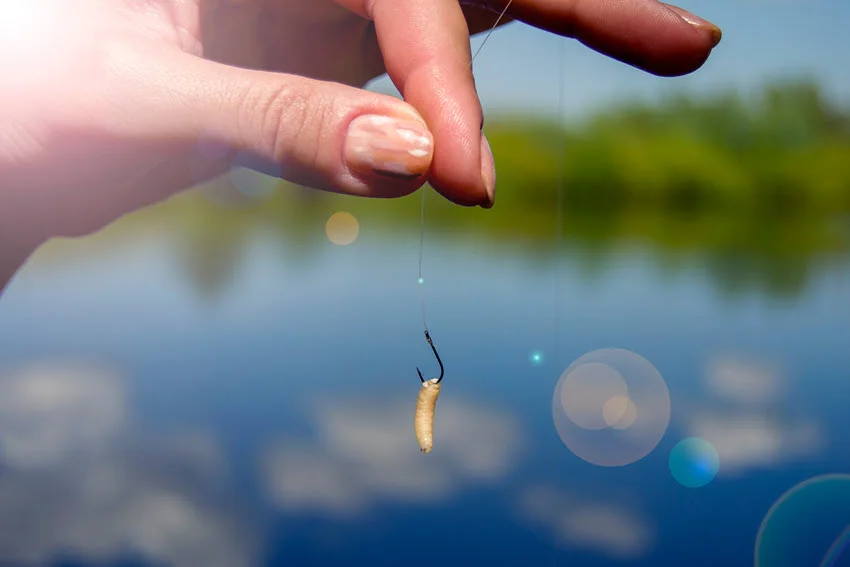
Insects are a staple in the diet of Trout, especially in streams and rivers where there is a range of water bugs. Grasshoppers, crickets, and grubs make fantastic bait, as do nymphs and grubs.
Trout like insects that float on the surface or get caught in the current, so to mimic this, try casting your bait near overhanging vegetation or a riffle in the water. Trout attacks quickly, so be careful!
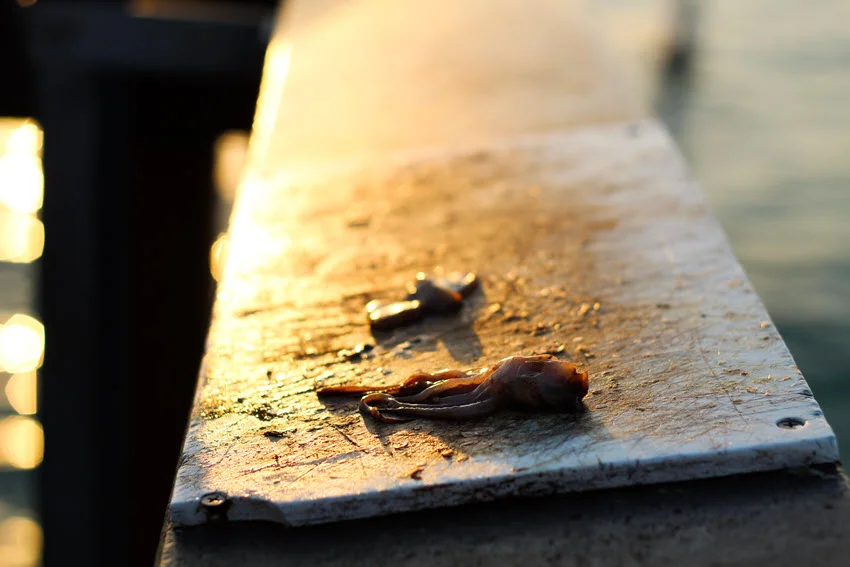
For anglers targeting trophy-sized Trout, fish heads and bodies are effective baits that perfectly mimic the remains of smaller fish, like protein-rich snacks for hungry predators. The pungent smell and realistic texture make it hard for Trout to resist, especially during the colder months. They need coffee.
Although Trout species are more addicted to live bait, artificial bait is not easy to discard either. Various artificial creations mimic natural prey's look, feel, and movement, making them irresistible to Trout. The beauty of artificial lures is that they offer versatility, durability at the same time, and adaptability to crystal clear mountain streams or deep reservoirs.
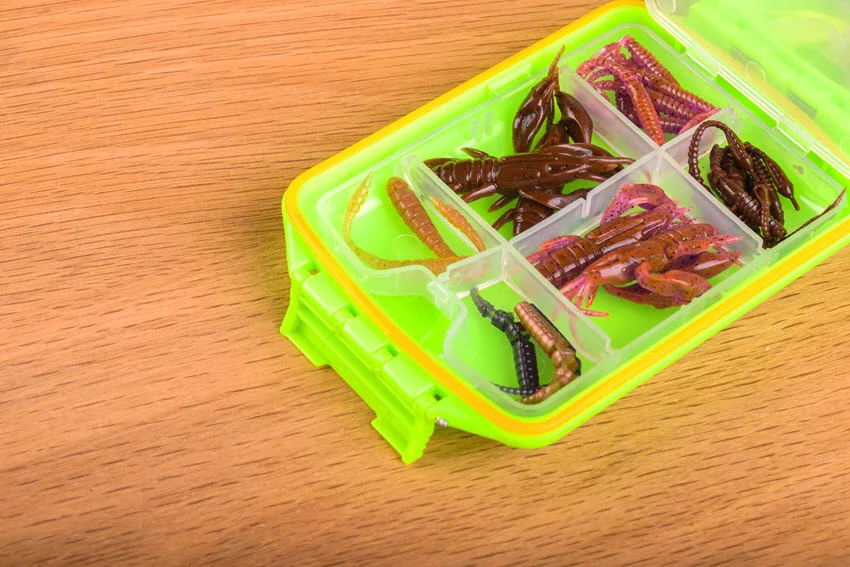
Soft plastic jugs are a good choice for imitating live prey. These versatile lures can look like insects, small fish, or crabs, depending on how you present them. Whether you're fishing in fast-moving rivers or calm lakes, Trout find it hard to resist their subtle, fluttering action.
You can experiment with colors; natural shades like brown and green work wonders in clear water, and brighter options like pink or chartreuse are great for deeper water.
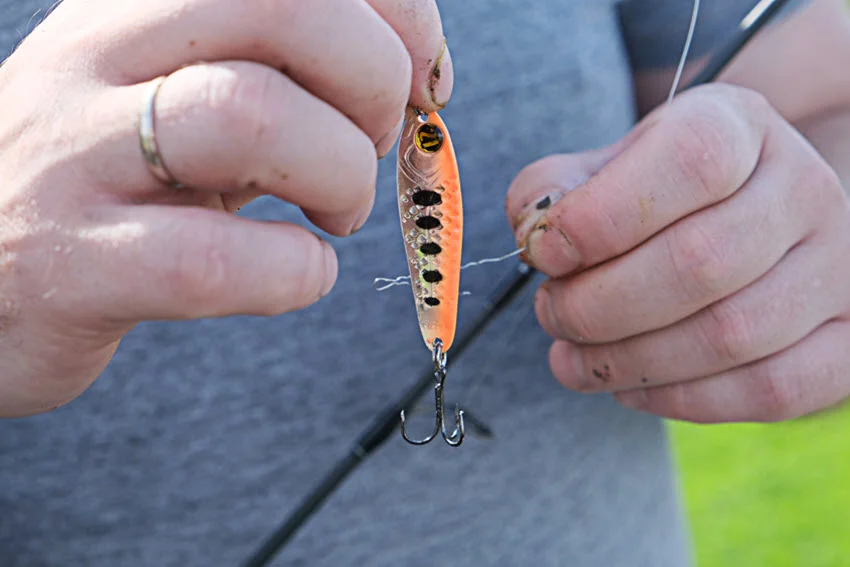
Crankbaits are the best option for aggressive Trout seasons. They cover water quickly, and their realistic design and erratic swimming mimic a baitfish, eliciting strikes from even the most cautious fish.
They can be found in different shapes and diving depths and fish effectively in streams, rivers, or lakes. Choose natural patterns or metallic, bright designs for clear water for low visibility. Adjusting the download speed and allowing occasional pauses allows you to create a presentation that drives Trout wild.
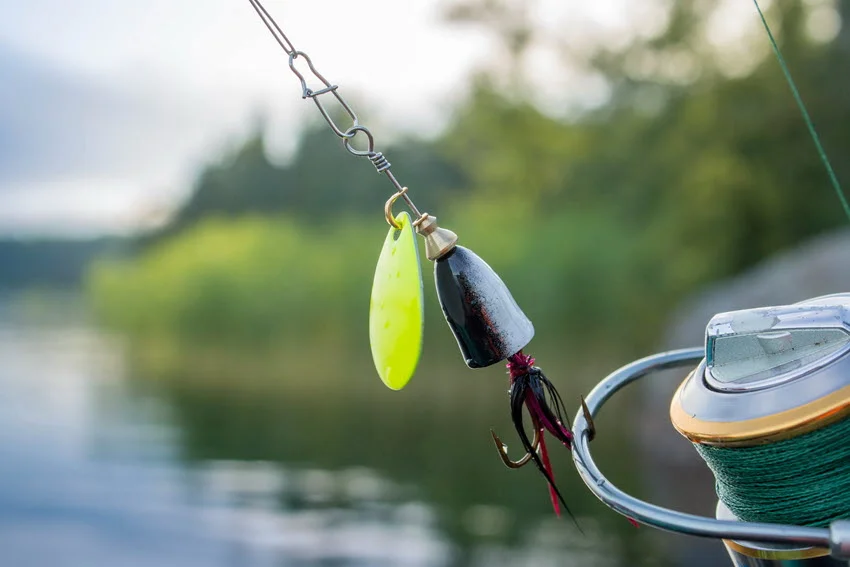
Spinnerbaits are complex lures that offer both flash and vibration. They are especially effective in streams where the current can enhance their movement. Their rotating blade creates a flashing effect that mimics the escape of a small fish.
Anglers primarily use them on cloudy days or in dirty water with limited visibility. For Trout, smaller baits in silver or gold tones will be a good choice. Constantly coming back usually works and subtly pauses combos to increase your chances of attacking.
![]()
Plastic grubs are not a grand bait, but incredibly effective for targeting Trout. Their soft texture and natural movement, mimicking small aquatic creatures, make them irresistible to hungry fish.
Their versatility allows you to experiment with the retrieve, such as dragging them along the bottom for quick, darting movements. Natural colors like white, green, and brown work well in clear water, while lighter shades like chartreuse and orange are better options in murky conditions.
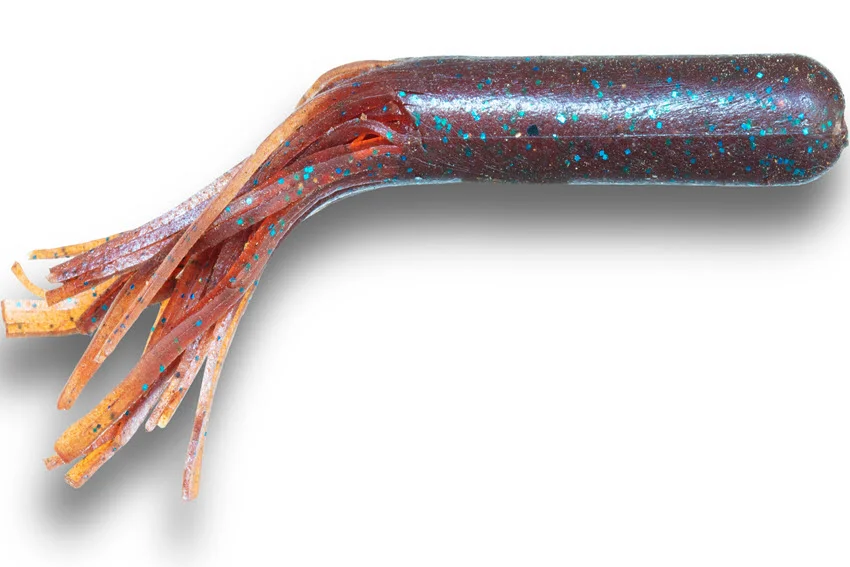
Tube jigs are versatile. They offer a unique, fluttering action that mimics everything from bait to leeches. Their hollow tube-like body collapses easily when bitten, providing a natural feel that encourages Trout to hold on longer. They are great for deeper water or when Trout hang close to the structure. Opt for a smaller tube in subtle colors like brown, olive, or white for best results.
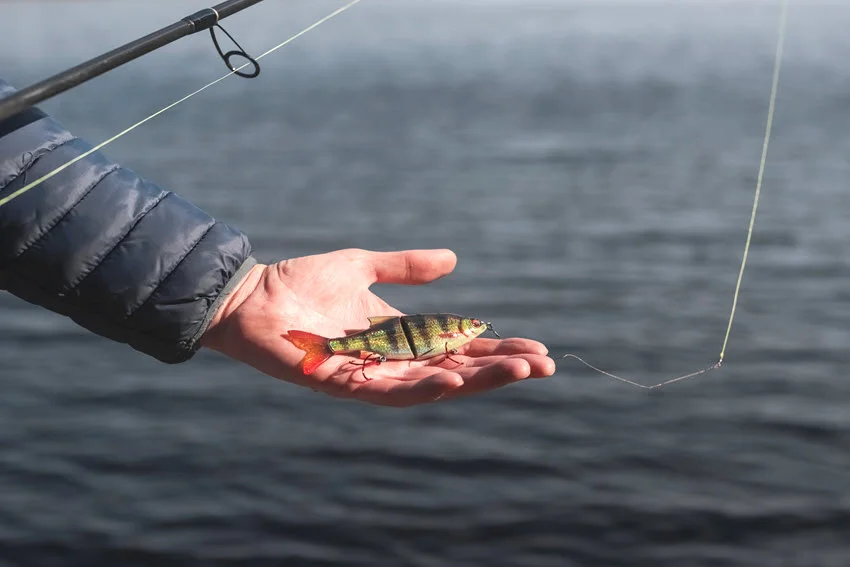
Swimbaits are ideal for hunting larger Trout. These realistic lures perfectly mimic a baitfish, with a swimming motion almost too realistic to resist. They come in various sizes and styles, from soft-body designs to complex plastic models.
When fishing for Trout, stick to smaller swimmers in natural colors like silver, green, or blue to match the local food. For an added edge, target areas where the bait is active – a Trout won't hesitate to strike when it sees one of these irresistible lures slide by.
Many anglers consider Trout fishing an art mainly due to their character, as these fish are known for their keen instincts, fast movements, and ability to test your patience.
It is as if they are playing with you. They require knowledge, playfulness, and the ability to lure them into various environments, such as calm mountain streams, crystal-clear lakes, or fast-flowing rivers. Success requires skill, strategy, and a little insider knowledge.

Trout requires gear that will provide strength as delicate as them and a sufficiently long and thin line that delivers precision, strength, and delicacy in perfect balance.
Whether you are a beginner or an experienced angler, well-chosen equipment will make the difference between an unforgettable catch and a sad story of "the one that got away." Rely on the following choice:
Choosing the correct tackle increases your chances of catching it, makes the situation more manageable, and lets you focus on pure skill.
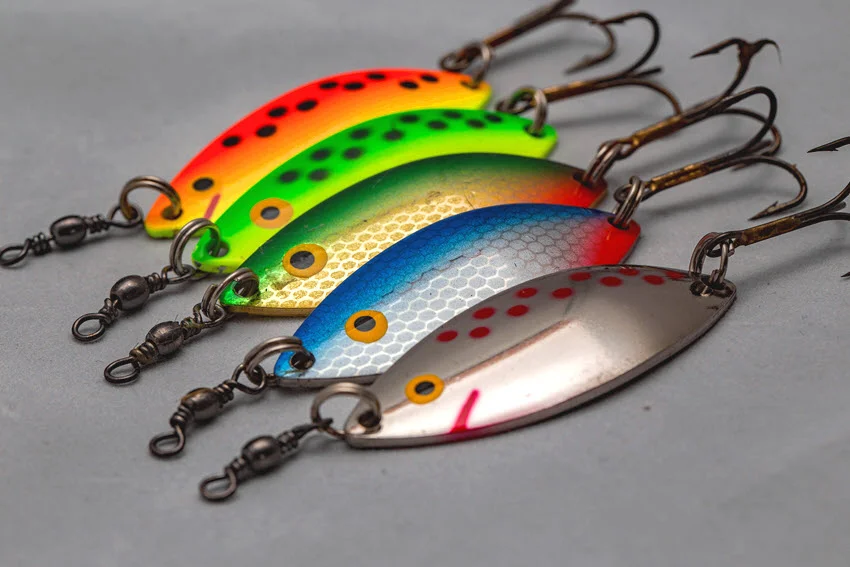
In addition to the shape and appropriate material, Trout will respond to visually appealing bait, primarily their color. Therefore, when fishing for them in more transparent waters, choose natural shades such as green, brown, and silver, like insects and small fish.
It is also a good idea to try a spoon and soft plastics that replicate the size and movement of their favorite food sources. Choose pink, gold, or those that reflect light in murky waters, especially in low light.
Trout fishing is specific in that you can combine it with different baits and various techniques. Some techniques allow you to improvise, and your choice depends on your affinities and location.
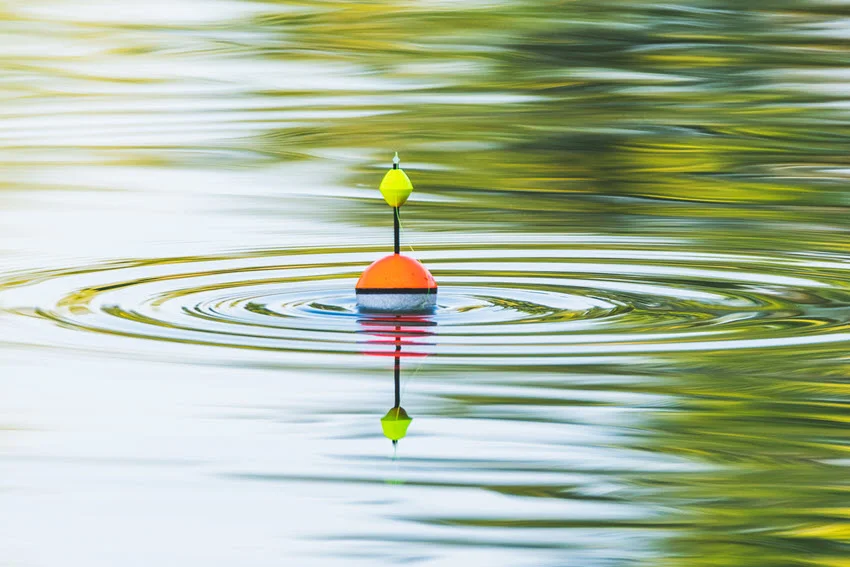
Float fishing is the most classic method of Trout fishing. It is perfect for both beginners and experienced anglers. Controlling the bait is simple: Keep it at the correct depth where the Trout usually feeds.
The float will signal every bite, so it is ideal for calmer waters like lakes or slower rivers. Here, it is best to choose some of the live bait, such as worms or insects. The key is to set the float at the optimal depth and observe. Besides being affordable, this technique allows you to enjoy nature while waiting for your perfect catch.
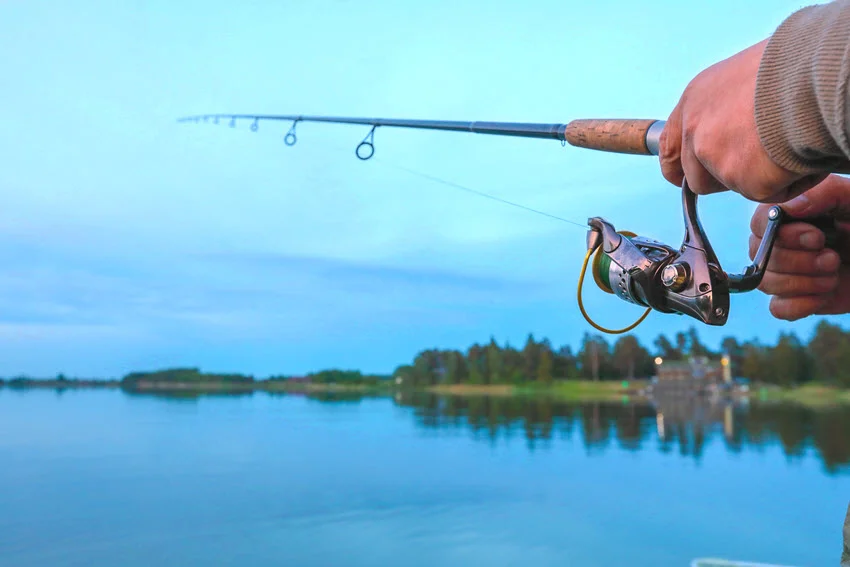
Spin fishing is dynamic and excellent for those who want to bring additional dynamism to Trout fishing. Various gear, including spinnerbaits, crankbaits, and plastic lures, mimics the Trout's natural food. This method is particularly effective in rivers and lakes where Trout move in search of prey.
The bottom line is that accurate casting and proper bait pulling can attract even the most wary Trout. Controlling the speed, pulling speed, and size of the bait, as well as the water conditions and the behavior of the fish, is essential. This technique allows you to explore different locations and is great for Trout fishing on the move.
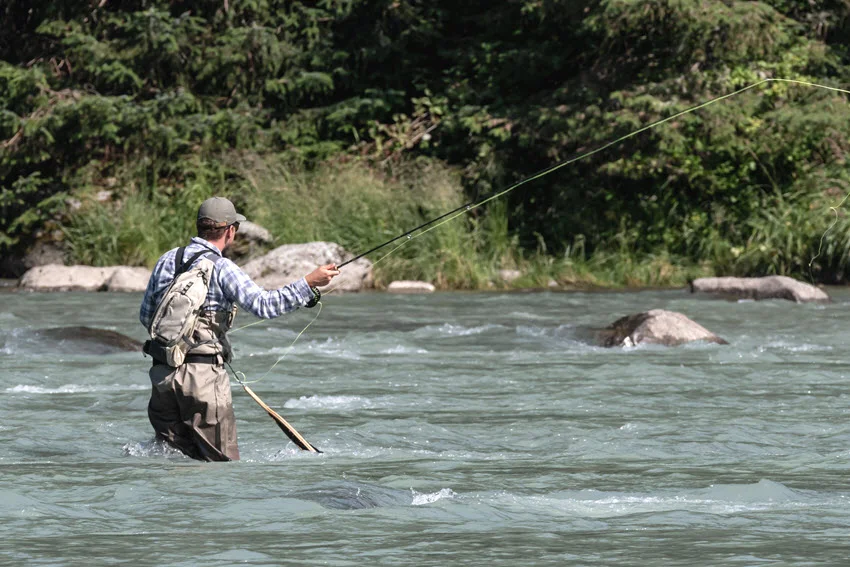
For many, fly fishing is the best-known technique for Trout fishing, especially in fast mountain rivers and even ice fishing. He uses artificial flies that mimic the insects that Trout naturally consumes.
The beauty of fly fishing lies in the skill of maintaining precision, but the reward is worth the effort. Trout are especially prone to attacking a well-presented fly, and they seem to appreciate the effort in their way. Fly fishing is ideal when insects are most active in spring and summer.
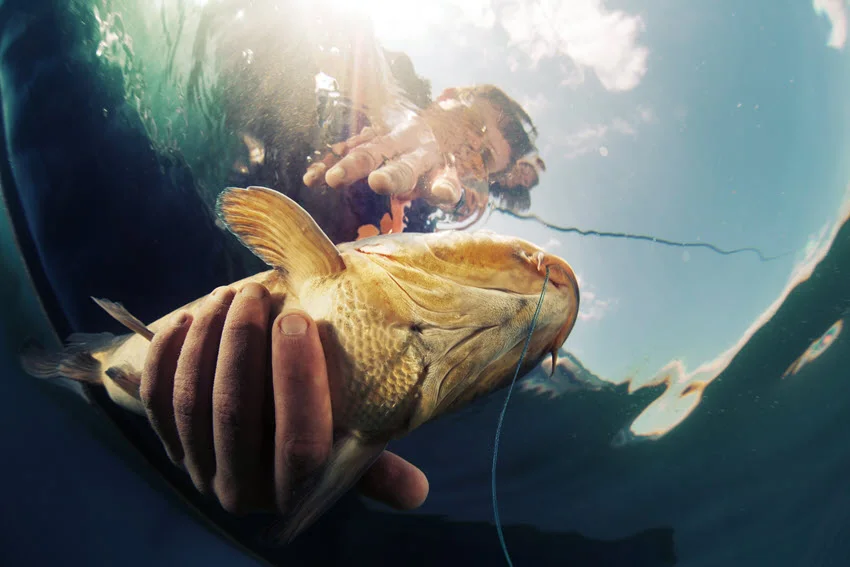
You might not associate bottom fishing with Trout, but it is an excellent technique for the colder months when these fish retreat to deeper layers of water. Anglers use a heavier lead to keep the bait close to the bottom, where Trout often feed in the winter. It can also be used for fishing in lakes and slower rivers, where Trout can be found hidden among rocks and plants.
Live baits, such as worms or pieces of fish, are often the most successful, but so are skill and patience. Trout sometimes approaches the bait cautiously before biting. Bottom fishing is a quiet and relaxing technique that can yield impressive catches.

Trolling is ideal for large bodies of water such as lakes. The bait is pulled behind the boat at various depths using specialized rigs such as wobblers or deep-diving lures to attract Trout moving in search of food.
This fishing technique is best when the Trout are looking for cooler water at greater depths in the summer. Trolling allows you to cover large areas and find active fish, and the essence is in adjusting the boat's speed and the bait position.
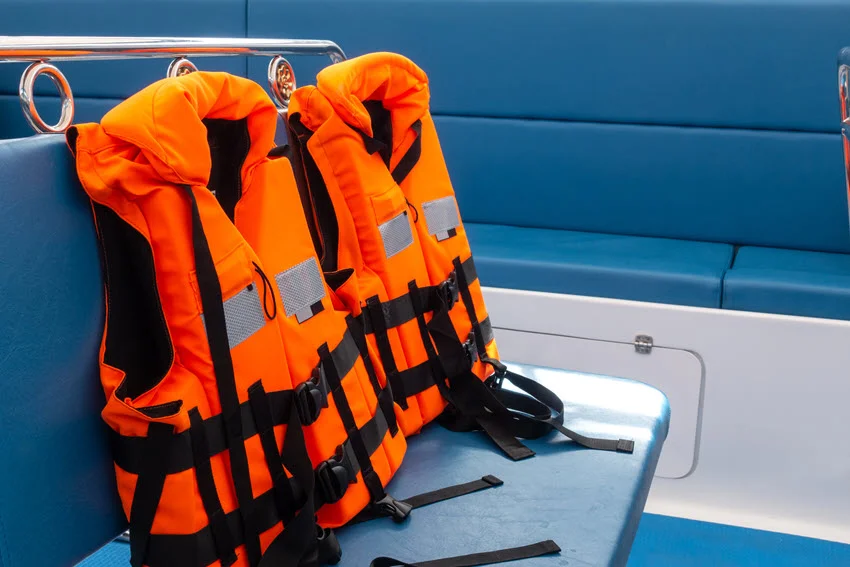
Safety is a key component of any adventure. Although Trout are not scary fish, they often live in challenging environments such as fast rivers, rocks, and cold mountain waters. Therefore, good preparation involves careful behavior that can make your adventure safe and stress-free.
Proper preparation, a combination of bait and tackle, and respect for the natural environment will ensure your Trout fishing is safe and memorable.

Understanding fishing regulations and ethical practices about specific fish species protects fish populations and ecosystems and promotes responsible angling practices.
Anglers Booking team
Fishing for Trout, like any other fish, means being responsible for nature and laws. This is important for preserving and maintaining the balance of all fish populations, including Trout.
Each state and region has different regulations, but most understand catch, size, and fishing season limits. Therefore, before heading out on the water, check local laws and obtain all permits. In the USA, the leading organization regarding Trout is Trout Unlimited. They follow the species and take care of their abundance and balance.
Ethics in fishing include respect for the natural environment and appropriate equipment that minimizes harm to the fish. Always clean your area and take your trash with you. Avoid fishing in hatcheries during the spawning season. Of course, practice catch-and-release as much as possible.
Trout is the ideal species for a combination of baits! It is possible and desirable to play with baits and techniques since they can be found in different environments, and some areas are available throughout.
Every bait and approach has in common patience, observation, and adaptation, which are the basis of all fishing. If you're an angler, you've undoubtedly encountered Trout, so drop us a tip or two in the comment section! Happy fishing.

The expert copywriters at Anglers Booking have meticulously crafted this article. Our dedicated team of writers provides valuable insights and information to enhance your angling experience.
Embark on unforgettable fishing adventures with us at Anglers Booking.
book your charterOctober 17, 2025
October 15, 2025
October 10, 2025
October 11, 2025
October 4, 2025
September 29, 2025
September 25, 2025
September 21, 2025

You're now part of our exclusive community. Get ready for premium content and updates straight to your inbox.
close
Subscribe to our newsletter and receive a selection of cool articles every week.
Please enter a valid email address.

Be the first to know when we're back in action.
Please enter a valid email address.
Leave a Comment
Your email address will not be published. Required fields are marked *
Thank you for your comment! It has been submitted for review and will appear on the site shortly.